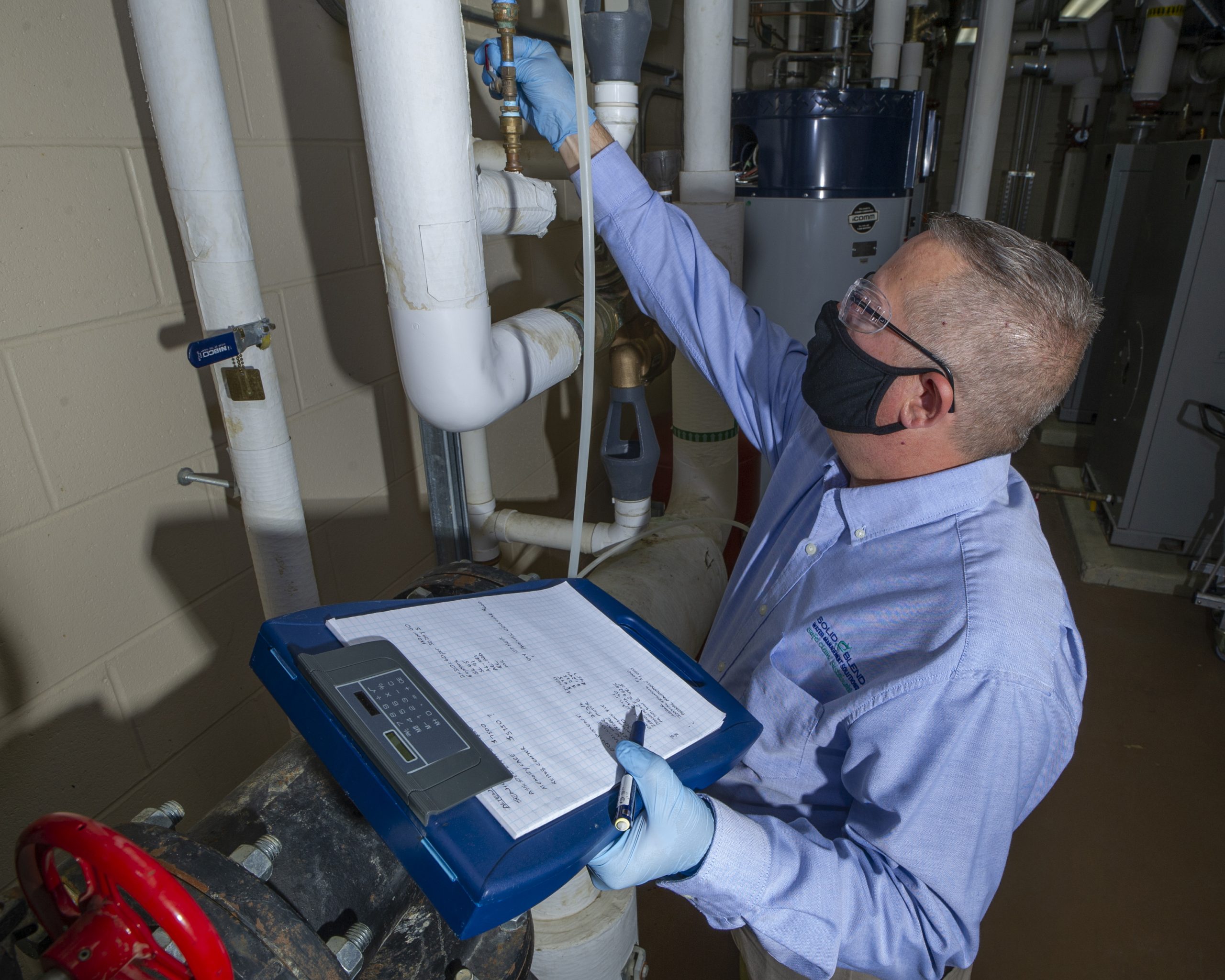Re-opening Businesses: Legionella Risk Rises During Pandemic Shutdown
6 Steps to Reduce Risk and Properly Manage Water Systems
Dayton, OH (April 28, 2020) – Businesses shut down during the coronavirus pandemic are preparing to re-open, with excitement building around welcoming back staff and customers. As preparations are made, managers and owners will also need to take steps to prevent an outbreak of Legionella, which can lead to the potentially deadly Legionnaire’s disease.
The risk for Legionella increases when water becomes stagnant, as it can in buildings that are unoccupied or experiencing very low occupancy. According to the Centers for Disease Control, additional risk factors for Legionella include temperature fluctuations in water — Legionella grows best within 77°F-108°F water — and a reduction in disinfectant levels in your building’s water systems. To prevent Legionella growth, it is important to keep cold water cold and keep hot water hot.
“As we’ve taken care of the water systems at hospitals and long-term care facilities during the pandemic, we know how hard coronavirus has been on so many, including businesses that had to shut down entirely. It’s important to safeguard your building’s water by keeping it free from waterborne pathogens, whether it’s currently vacant or seeing minimal use, so you can be confident in welcoming back employees and customers,” said Lois Elrich, president of Solid Blend, a Dayton-based water management company.
If a building’s water system becomes contaminated, there can be serious health consequences for those still using the building and those who will eventually return – and serious financial consequences for the business.
Protecting people from a Legionella outbreak and preventing issues caused by other waterborne pathogens starts with properly disinfecting water distribution systems and sections of piping before employees return.
“The COVID-19 pandemic has created the perfect storm for Legionella outbreaks, and older adults, smokers and those with chronic lung disease or weakened immune systems are at the most risk. When we shut down buildings to socially distance, we unintentionally caused potable water to stagnate, and that significantly ups the chances of dangerous levels of Legionella growing in the water. Business owners and facility managers need to implement a water management plan as a critical first step in re-opening,” said Shannon Drake, Infection Prevention Specialist with Danis Building Construction Company, a construction management and general contractor operating in the Midwest.
Six Steps to Take Now:
- If you do not already have a water management plan, now is a good time to create one.
- If your water management plan doesn’t address water stagnation, add it.
- Where possible, maintain circulation by routinely flushing your water systems to avoid stagnation.
- Try to keep hot water hot and cold water cold. It’s important to keep your building’s water at safe temperatures in order to prevent waterborne pathogens from growing.
- If none of the above are possible, recommission your water systems as if they were new or being re-commissioned after being dormant (i.e. thoroughly flushed, cleaned and disinfected), before the building is re-occupied at normal occupancy levels and the water systems return to use.
- Follow ANSI/ASHRAE 188 (ASHRAE) standard and document any action steps taken or changes made to your water system in your water management plan.
To ensure that a building is ready to again welcome workers and visitors, businesses are encouraged to contact their public health department or a water management company for specific recommendations and any needed testing.

